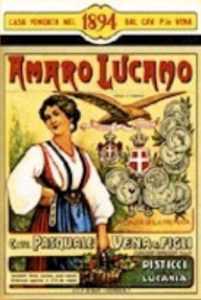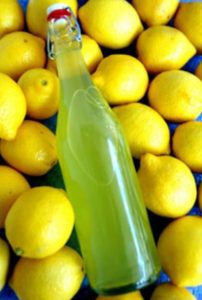Show Categories ››
Category: Recipes from Members
March/Marzo 2024 Newsletter ~ Italian
March 1, 2024
in category: Italian Versions, Newsletter Archives, Craco Society News, Dolci, Recipes from Basilicata, Recipes from Members, Holiday
Comments Off on March/Marzo 2024 Newsletter ~ Italian
March/Marzo 2024 Newsletter ~ English
February 29, 2024
in category: English Versions, Newsletter Archives, Craco Society News, Dolci, Recipes from Basilicata, Recipes from Members, Holiday
Comments Off on March/Marzo 2024 Newsletter ~ English
April/Aprile 2022 Newsletter – Italian
March 31, 2022
in category: Italian Versions, Newsletter Archives, Craco Pre-Frana Photos, Craco Post-Frana Photos, Craco Society News, Craco Vecchio, Crachesi in America, Recipes from Members, Holiday, Religious Life, A Year in The Life, World War II
Comments Off on April/Aprile 2022 Newsletter – Italian
April/Aprile 2022 Newsletter – English
March 31, 2022
in category: English Versions, Newsletter Archives, Craco Post-Frana Photos, Craco Society News, Craco Vecchio, Crachesi in America, Recipes from Members, Religious Life, A Year in The Life, Uncategorized, World War II, Life in Craco, Craco Today
Comments Off on April/Aprile 2022 Newsletter – English
PIZZA RUSTICA
This Easter time specialty from Craco was passed down from Antonia Francavilla Spero (b. Craco 1889; d. NY 1961) to her daughter Lena and then to Lena’s daughter Annette Cono Mule. It continues to be made annually.
Dough:
2 1/2 lbs flour
1 tbsp. salt
1 3/4 sticks butter melted & cooled
Crumble into flour, .make a well in flour and add
4 beaten eggs
2 oz. oil
1 cu. Warm water, add as needed
Knead until smooth ball forms.
Filling:
3 links semi dry sausage cut into small pieces
(You can use hot or sweet or a combination, remove casing of sausage).
3 lbs ricotta
3/4-lb mozzarella
3/4 wet basket cheese
1/2 dry basket cheese
6-8 eggs, 2 egg whites, reserve yolk for top brushing.
Fresh parsley
Grated romano cheese
Mix well
Use a deep 12″ pizza pan
Roll out dough, fill with mixture, roll out cover, crimp edges, prick with fork, brush with beaten egg yolk.
Bake 375 1 hr.
This recipe yields: 1 -12″ pie pan, 1-141/2″ pie pan, & 1-9″ round pie pan. The ingredients used above can only be found in Italian pork stores. The wet and dry basket cheese may only be available in some areas at Easter time.
Amaro Lucano
 Amaro Lucano is less bitter than some other Italian bitters, though it has no sweetness in it. The recipe, consisting of herbs and roots, is a trade secret. It has a light body to be used as a digesti, or an apéritif. As a digesti, you serve it neat. As an apéritif, you can serve it on ice with a twist of lemon or orange, topped up with soda water.
Amaro Lucano is less bitter than some other Italian bitters, though it has no sweetness in it. The recipe, consisting of herbs and roots, is a trade secret. It has a light body to be used as a digesti, or an apéritif. As a digesti, you serve it neat. As an apéritif, you can serve it on ice with a twist of lemon or orange, topped up with soda water.
It is made in Pisticci Scalo in Basilicata (about 15 km from Craco) Italy, and sold in 700 ml bottles. (30% alcohol.)
History
Amaro Lucano was invented by Pasquale Vena in 1894 (born Pisticci, Basilicata 1871 – died 1937.) His three brothers went to America, but he stayed behind, and went north to Naples in Campania. There, he apprenticed to learn the art of pastry making in a pastry shop called ” the Scaturchio” in Piazza San Domenico Maggiore in Naples (the pastry shop is still extant as of 2006.) Out of his own personal interest, he learned about herbs and herbal mixtures.
He returned to Pisticci, and with the small amount of money he had saved, he opened a Bar called the “Caffé Vena.” The pastries that he sold from the cafe were a success – along with the bitters that he created. He left the firm to his two sons, Leonardo (1910 – 1993) and Giuseppe (aka “Peppino”, born 1918), who were 27 and 19, respectively, at the time.
In July 1965, the company built a new factory to meet increased demand for the bitters.
Literature & Lore
The label has a picture of a woman called “Pacchiana” (apparently a Campanian word for “farmer.”) She’s holding a basket of herbs. The motto on the label is “Lavoro e onestà”, which means “work and honesty.” The label also depicts various medals and awards, and crests from the Savoy and Duchy of Aosta families. In the bottom right corner is written “Pisticci, Lucania.”
Filippo & Rosa Francavilla’s Limoncello Recipe
 Filippo & Rosa Francavilla’s Limoncello Recipe
Filippo & Rosa Francavilla’s Limoncello Recipe
(as enjoyed at the Crachesi del Nord America Reunion)
1 liter whole grain alcohol
8 lemons (yellow skin only)
1 liter water
10 oz. (about 1 1/2 cups) granulated sugar
2 oz. (about 3 tablespoons) Karo Syrup
Take yellow skins from the 8 lemons (use a vegetable peeler to get the thin skins and avoid getting the white pith) and place in glassware with a lid, add one liter whole grain alcohol. Cover tightly and let sit for 3 to 4 days.
On the 3rd or 4th day, boil one liter of water, remove from heat and add sugar. Stir until sugar is dissolved. Let mixture cool.
Take the alcohol and lemon peels and strain liquid into bowl. Then combine the cooled sugar water to the lemon mixture. Give a quick stir and then add Karo Syrup. Mix thoroughly and place in glass bottles. Keep this in the freezer at all times. The bottle will not break or explode in the freezer because of the alcohol.
Saluti! Filippo and Rosa Francavilla
Alternative Recipe (if grain alcohol is not available, try this)
1 dozen large lemons
1 750 ml bottle of vodka
2 cups sugar
3 cups water
Peel thin strips of the lemons avoiding the subdermous white pith. Steep the peels in vodka for a week or longer in a glass container or crock until the peels have lost their color. Strain. Make simple syrup by dissolving sugar and water over medium heat on a stove and let it cool. Add the sugar syrup to the lemon-infused vodka. Keep chilled in the refrigerator; not in the freezer – this version is not made with whole grain alcohol and it will freeze.
May 30, 2017
in category: Recipes from Members
Tagged limoncello recipe
Comments Off on Filippo & Rosa Francavilla’s Limoncello Recipe
Decorated Biscuit
Decorated Biscuit
Ingredients for Sponge cake batter
5 eggs
200 g of sugar
130 g of flour
Preparation
Beat eggs with sugar and add flour.
Ingredients for Decorative Mixture
50 g of butter
50 g of confectioners’ sugar
25 g of flour
25 g of cocoa
40 g of egg white
Preparation
Combine sugar and butter. Add the egg white, the flour and the cocoa. Refrigerate for 20 minutes. Line a cookie sheet with wax paper. With the mixture, decorate the bottom of the cookie sheet into a shape of choice (strips, flowers, etc.) and put it in the freezer until thickened. Spread the sponge cake batter over the decorative mixture to 1.5 – 2 cm. Bake at 2600 C (5000 F), 4 minutes approximately.
May 30, 2017
in category: Dolci, Recipes from Members
Tagged Italian Cookie Recipe
Comments Off on Decorated Biscuit
Cuccia
Cuccia
Ingredients
350 g of wheat grains
1 L of vino cotto (sweet cooked wine)
150-200 g of sugar
150 g of walnuts
150 g of grated bittersweet chocolate
150 g of pomegranate seeds
Preparation
Soak the wheat grains overnight. Cook them in a large pot of boiling water. Drain thoroughly.
Transfer the wheat grains in a separate saucepan and add the vino cotto, the sugar, the coarsely chopped nuts and the grated chocolate. Combine all ingredients and mix with a wooden spoon.
Cook for 15 minutes and let it cool. At the end, add the pomegranate seeds and mix.
Ossa di Morti
Ossa di Morti
Ingredients
500 of flour
70 g of sugar
50 ml of anice
Wild fennel seeds to taste
40 g of lard
Salt
Preparation
Arrange flour in a mound and make a well. Add the sugar, the anice, the fennel seeds, the melted lard and a pinch of salt. Combine all the ingredients and knead to obtain a smooth and elastic dough. Roll out little sticks with the dough and shape them into an 8, a braid or a ring. Bake in a preheated oven at 170° C (335° F), 20 minutes approximately. Take them out when they are golden.